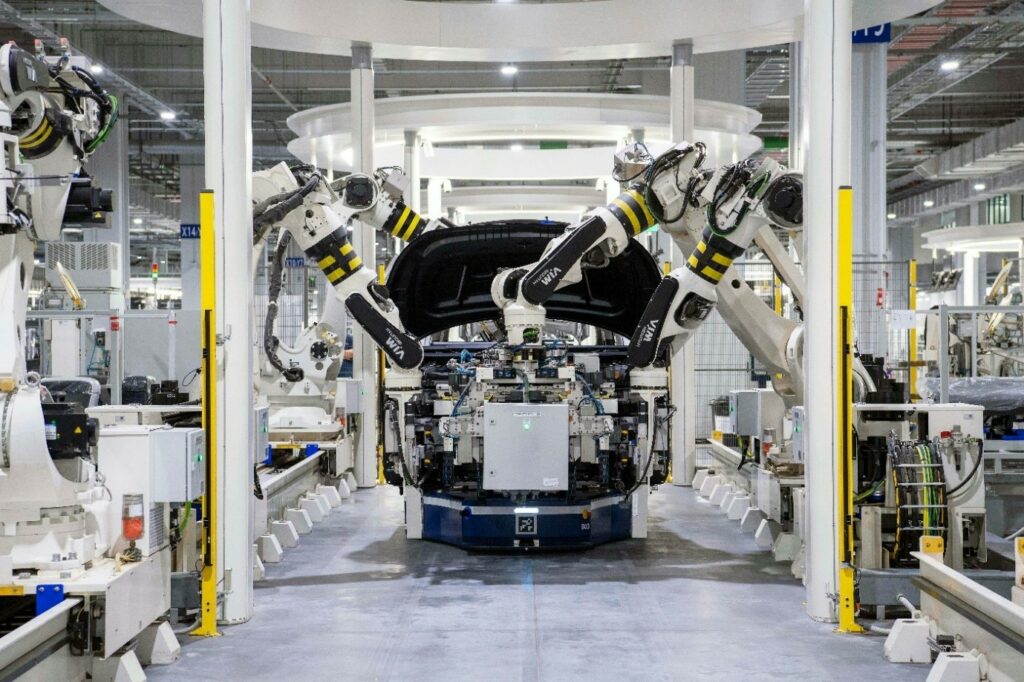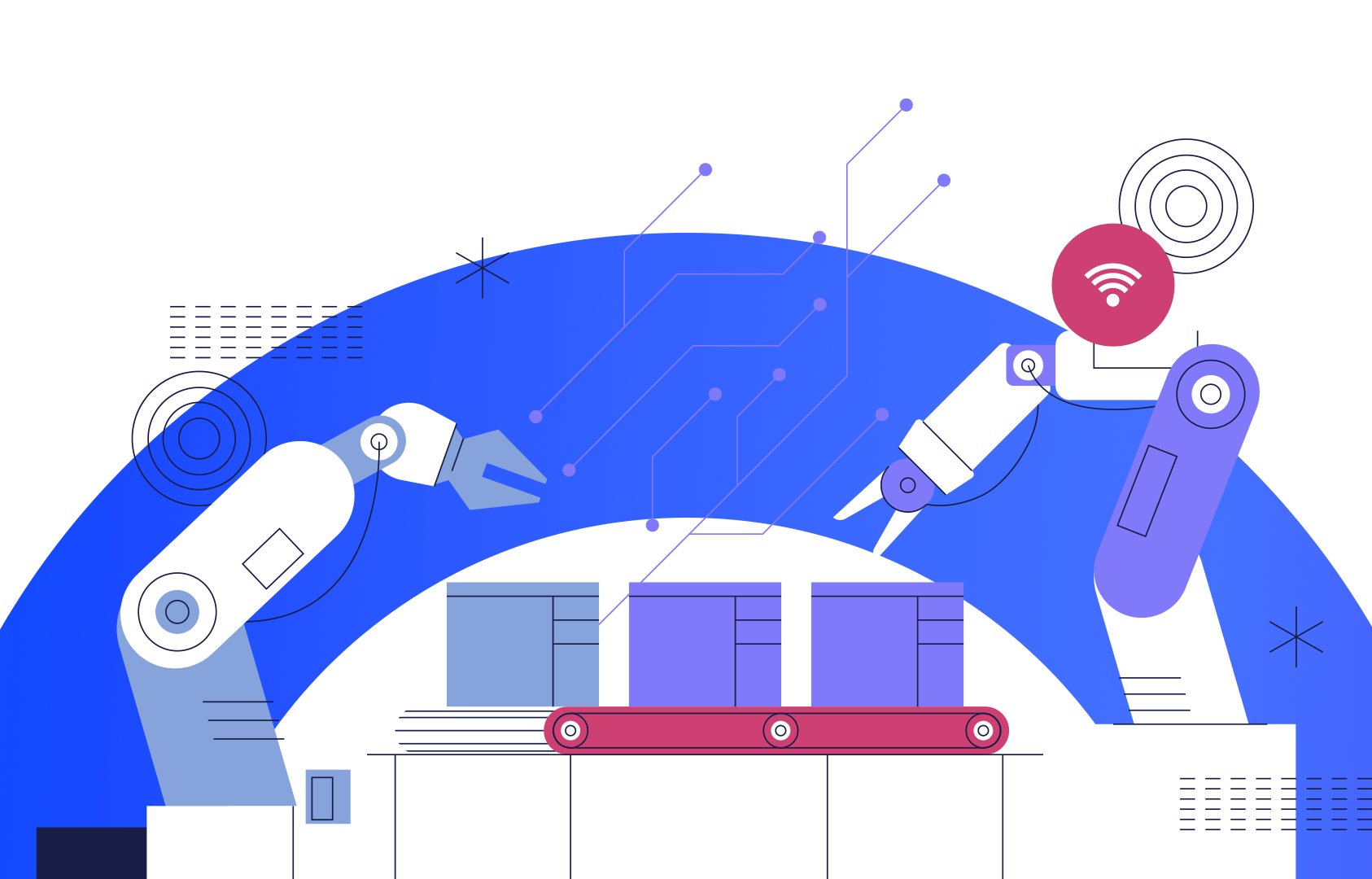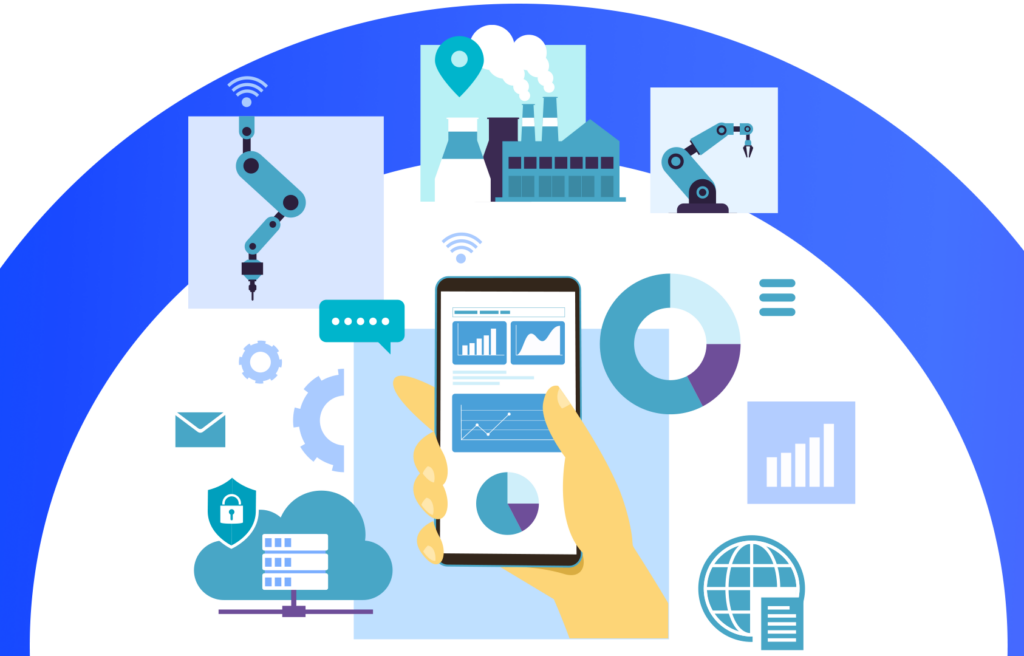A smart factory for a changing world
Digital transformation has been observed as an urgent need by business leaders in the past few years. In the post-COVID-19 world, huge operational risks and disruptions erupted for businesses around the world. More than ever before, companies are determined to innovate and compete through modernized supply chain mechanisms and digital transformations on the basis of immediate priorities, instead of long-term goals.
Evolved customer expectations, namely the Amazon Effect, are contributing to the development of the future face of factories. In order for businesses to maintain competitiveness in manufacturing operations and supply chains, there needs to be a shift. Hence, enter the smart factory.
What is a smart factory?

A smart factory integrates machines, people, and Big Data to create a sole digitally connected ecosystem. Alongside analyzing and curating data, a smart factory learns and uses it to facilitate informed decisions. It forecasts trends and events and cultivates smart manufacturing workflows and automated processes.
In this scenario, sensors within machines detect potential production errors early, signaling a robot to intervene before any issues arise. These advancements are driving the Fourth Industrial Revolution, known as Industry 4.0.
While a smart factory works to eliminate errors and fasten processes, achieving this would be improbable without people. For example, line operators track production data on a mobile device. Based on this data, they choose to load a machine differently, thereby improving its performance or that of an entire production line.
The four levels of smart factories
There exist four levels that mark the journey through improvement processes to achieve a smart factory:
- Level one: basic data availability – The factory is not smart at this point. Instead, while there is data availability, it cannot be easily accessed or analyzed. At this level, people would have to extract data manually from legacy systems. This involves custom integrations, importing spreadsheets, or sometimes data re-entry.
- Level two: data contextualization – For instance, the leadership asks to see the effect of different staffing levels on output. This would require basic correlating of operational and HR data. At this stage, the data is organized into dashboards and other visual displays to make it comprehensible.
- Level three: data activation – Researchers use advanced analytical methods, including machine learning and AI, to assist in predictive analysis with minimal human input. For example, AI algorithms and IIoT platforms, such as OmniconnectTM, predict machine failure beforehand. This enables operators to make fixes to avoid permanent damage and long durations of costly production downtime.
- Level four: action-oriented data – Upon reaching the fourth level, the robots and other machines would act on their own to continuously analyze data streams. The team adjusts the production based on consumer demand predictions or uses a vision sensor to detect flaws, triggering robot corrections. The feedback loops refine decision-making to enable complete industry 4.0 autonomy.
Benefits of smart factories
The global smart manufacturing market involves technologies such as big data analytics and robotics. Having reached over 277 billion USD in 2022, it is predicted to grow up to 650 billion by 2029. The reasons for manufacturers investing in this market are as follows:
- Better decision-making – At every stage of the manufacturing process, data is collected and analyzed. This helps leadership and workers make better, fact-based, and quick decisions at each stage. Supply chain professionals, for example, review given recommendations to order materials. They decide when shipments arrive, or choose to adjust algorithms for more relevant future recommendations.
- Minimized cost – By lowering product defects, human errors, and waste, and a reduced headcount. Furthermore, predictive maintenance through IIoT manufacturing solutions, such as OEEfficienci, extends the lifespan of machines.
- Less dependence on human labor – Though people will have some important roles in smart factories, a bigger chunk of work will be achieved by manufacturers with fewer employees.
- Environmental impact lowered – A smart factory leads to reduction in waste, as it is fuelled by connected and intelligent tech. Furthermore, efficient use of materials leads to minimization of the carbon footprint.
What technologies are used in a smart factory?
- Sensors:
Manufacturers place sensors on or in machines on the smart factory floor. Data on varying factors is gathered, including temperature, vibrations, pressure, torque, proximity, and motion. These sensors are core to IIoT.
- Industrial IoT (IIoT):
Workers use data from machines and internet-connected objects to assess multiple factors. These factors are performance, physical condition, output and other supporting processes. This allows them to accordingly address machine issues and adjust processes. For instance, after detecting abnormal vibrations and temperature shifts, IIoT sensors inform maintenance. This helps prevent downtime and damage.
- Cloud computing:
This forms the foundation for most smart factories, and deals with large data storage, applications, and base infrastructure. Offering some key benefits, cloud services are scaled according to the needs of the manufacturer. Cloud services offer security and backup, along with flexibility and ease of access.
- Big data:
The huge amount of data gathered through these processes is called Big Data. Manufacturers utilize data management systems for predictive maintenance, quality checks, anomaly, waste reduction, and more.
- Digital twins:
This provides the ability to create an identical and virtual replica of the machine or system. The ‘twin’ allows for maximized innovation, without the operational risk. This means that the manufacturer reconfigures the twin in different ways and push it to its limits. It tests for being compatible with an already existing system, without any wastage of real-world resources.
Creating a smart factory
Where a manufacturer begins their smart factory transformation, it depends on which stage they stand at the moment. It is important to determine processes that are most crucial to the business. Therefore, an initial systems audit will assist in taking stock of assets, existing processes, and business systems.
In order to embark on this digital transformation journey, it is key to set up a strong and secure data management system and a reliable ERP system. This in turn will support advanced functionality which will drive the system. The capability of managing Big data and connecting technologies like machine learning, AI, and advanced analytics.
Finally, opting for IIoT systems like OmniconnectTM will assist manufacturers in maximizing their efficiency and productivity. This in turn will facilitate the manufacturer’s journey towards creating a smart factory. Take smart factory initiatives for your manufacturing facility, and talk to our experts.




